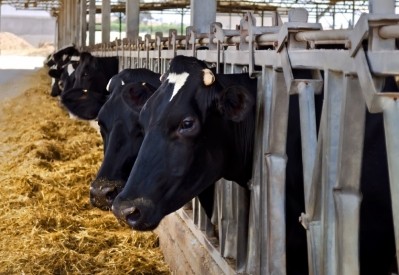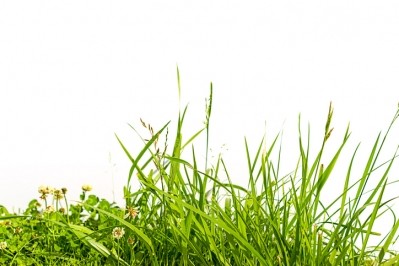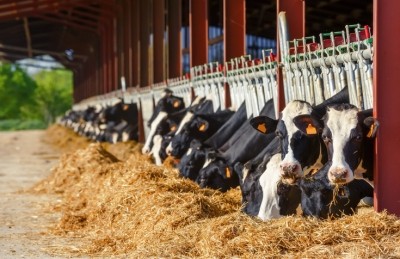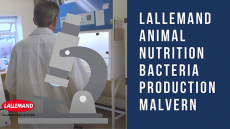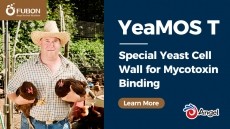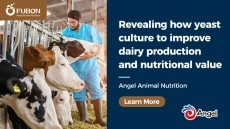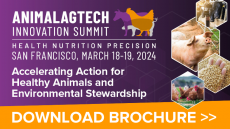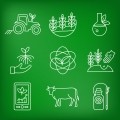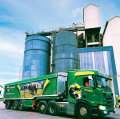USDA awards $467k for work to cut cow GHG emissions, improve diets
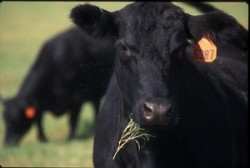
Funding for the multi-year grant project was announced by the US Department of Agriculture (USDA) through its National Institute of Food and Agriculture program. The $467,500 award was one of 40 grants presented totaling more than $15.7m in funding.
The project includes a series of related feeding trials looking at ways to improve high-forage cattle diets, use of nutrients and to reduce the amount of methane cows produce, said Nicolas DiLorenzo, assistant professor in animal sciences at the University of Florida’s North Florida Research and Education Center.
“The overall idea of the project is to search for alternatives for high-forage diets,” he told FeedNavigator. “Sulfur and nitrates are both interventions that seems to have potential – and then the bismuth comes into play to mitigate the effect of high sulfur [and] nitrates may be a potential replacement of urea in diets that are low in protein.”
Adding sulfur may offer a way to reduce the methane produced by a cow, he said. Limiting production of gas is the goal because it has been identified as a greenhouse gas, he added in the grant proposal.
“A diet that has high sulfates may lead to a reduction in methane, and that happens because the reduction of sulfate to hydrogen sulfide is more favorable than the production of methane,” said DiLorenzo. “It’s an alternative route to reduce the hydrogen in the rumen and maybe reroute that toward other compounds and then mitigate the negative effects of high-forage diets – so [we are] supplementing the high forage diet to see if has an influence on methane – and then bismuth subsalicylate should mitigate the effects of high sulfur.”
The project also examines the use of added nitrates in the diet to offer an alternative protein source and potentially limit the production of methane while improving performance, he said.
“We’re combining the two and looking at the option of one or the other and seeing if makes any difference, and if we can reduce methane, and enhance cattle growth and alleviate the negative effects of high sulfur,” he said.
Study details
The feed ingredient examination includes a series of feeding trials, said DiLorenzo. The work is building off in vitro studies looking at methane reduction.
Initial steps in the project involved doing gas capture work to check cows for methane production, which was followed by a digestibility study, he said.
The current feeding trial involves use of diets that include warm season grass hay and supplemental bismuth subsalicylate (BSS) and nitrates, he said. “We’re trying to mimic producer strategy in Florida and some of those hay samples can be quite high in sulfur,” he added.
The cattle involved get an experimental diet and may see an increase in BSS, nitrates or both in their diet and a negative control group received a feed with no added nitrogen, he said. The feeding trial runs for 70 days and involves 100 cattle.
The researchers are also tracking liver development to see if the present amounts of sulfur in the diet are altering how minerals bind, said DiLorenzo.
The final step of the project will be a feedlot-based feeding trial, he said. Similar doses of the feed additives are expected to be used in all the feeding trials so results can be compared across the trials.
Objectives to address
In completing the feeding trials there are a number of objectives the project is looking to address, said DiLorenzo in the grant proposal.
These include assessing the interaction of BSS with nitrates on ruminal fermentation, metabolism, the microbial ecosystem and methane production when cows are fed a low-quality forage diet, he said. And understanding the role of BSS when fed with nitrates on the performance of cattle.
The group hypothesized that cattle getting the feed additives along with the high-sulfur, low-quality forage diet will demonstrate improved performance and mineral use, he said in the proposal.
The final object was to understand the use of BSS and nitrates in diets for feedlot cattle getting a grain-based diet with high-sulfur byproducts, he said.

